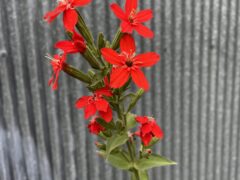
royal catchfly
Silene regia
Hummingbirds and swallowtail butterflies are attracted to this bright red flowering native. Sticky glands cover … Continued
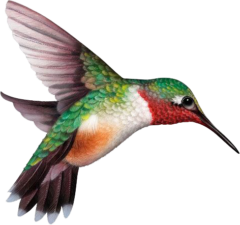 Hummingbirds, bees and butterflies are well-known pollinators, but there are thousands of unsung pollinator heroes, including moths, wasps, flies, and beetles, many mammals, birds, and reptiles, who also take on the job.
Hummingbirds, bees and butterflies are well-known pollinators, but there are thousands of unsung pollinator heroes, including moths, wasps, flies, and beetles, many mammals, birds, and reptiles, who also take on the job.
Pollinators move from plant to plant, fueling up with pollen and nectar from blooming trees, shrubs, perennials, annuals, vegetable plants, and herbs. As they move, the pollinators transport and deposit pollen, fertilizing plants and allowing them to reproduce.
Pollinator plants can be native and non-native, but not all flowering plants are equal when it comes to providing the highest quality protein-rich pollen. Many hybrids don’t even produce pollen at all. The following list includes pollen-rich plants to include in your garden to provide pollinators with food.
Local butterfly expert Lenora Larson has created these informational handouts. You can download them here!
• Butterflies: Flying Flowers in your Garden!
• A Vital Connection: Native Plants and Butterflies
• Long Lips Farm Caterpillar Foodplants
• Butterfly Bartending: Nectar Flowers
• Long Lips Farm: Selected Butterfly Nectar Flowers
• Bee Friendly: Plants for Bees and Other Pollinators
Since 1970 the population of North American birds has dropped nearly 30% — almost three billion birds have vanished from our forests, grasslands, and backyards in less than a human lifetime. It’s a chilling fact that makes it clear that we must act as individuals to help ensure their survival.
Most importantly, ninety-six percent of all terrestrial bird species rear their young on insects so it is also important to grow plants that feed insects to provide a well-rounded habitat in your garden.
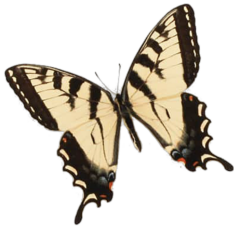

Silene regia
Hummingbirds and swallowtail butterflies are attracted to this bright red flowering native. Sticky glands cover … Continued
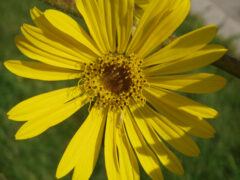
Silphium laciniatum
A native perennial which occurs in prairies throughout most of the Midwest. Tall, sturdy plant … Continued

Silphium terebinthinaceum
Native to prairies, railroad right-of-ways, and other exposed habitats in the Midwest and portions of … Continued
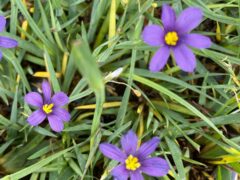
Sissyrinchium ‘Lucerne'
Star-like, 1″ violet-blue flowers have a yellow center over grassy foliage. Reblooms sporadically in late … Continued
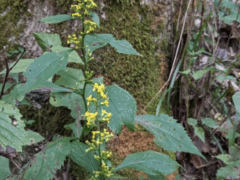
Solidago flexicaulis
Spikes of golden flowers open on black stems that zigzag. Like all goldenrods zigzag supports … Continued
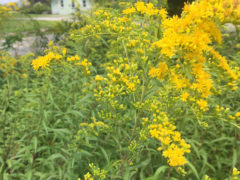
Solidago speciosa
Showy goldenrod is a rhizomatous native perennial which typically occurs in dry soils in open … Continued
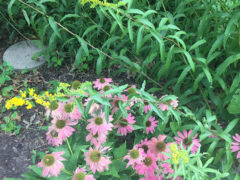
Oligoneuron rigidum {Solidago rigida}
Large, flat medium yellow flower clusters provide late-season nectar for butterflies and, later, seed for … Continued
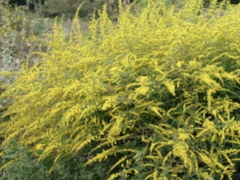
Solidago rugosa 'Fireworks'
Lacy, radiating bloom spikes of sparkling golden-yellow from mid-September past mid-October. Plants grow 3-4′ high. … Continued
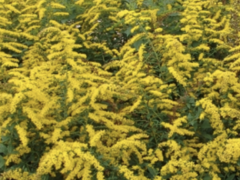
Solidago sphacelata
Sprays of golden yellow flowers open from mid-August through September over semievergreen heart-shaped leaves. This … Continued
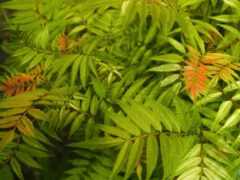
Sorbaria sorbifolia 'Mr. Mustard'
Mr. Mustard has incredibly colorful springtime foliage of yellow, orange, red, pink, and lime green. … Continued
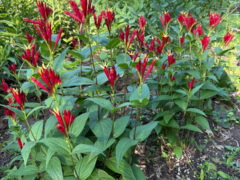
Spigelia marilandica
A long flowering woodland perennial with unique flowers that attract pollinators — especially hummingbirds. This … Continued
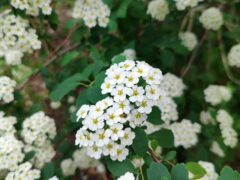
Spiraea × vanhouttei
Old-fashioned spirea is often found in established landscapes around older homes. This handsome arching, loose … Continued